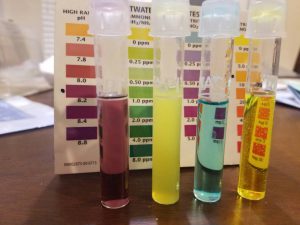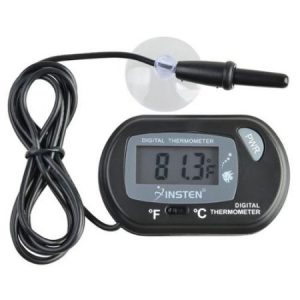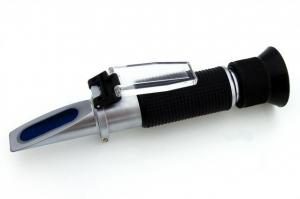This post was originally published on December 5, 2016
The latest update to this post was made 7 years ago.
 Saltwater Parameter Testing
Saltwater Parameter Testing

You are on page 1/2.
Saltwater Parameter Testing is very important in a saltwater aquarium. Large fluctuations of many of these parameters can be very harmful to fish, corals and invertebrates. It is very important to keep the following parameters in check to make sure your livestock stay happy, healthy and beautiful. Measure these parameters with a good test kit like the Salifert, Elos, API, Hanna checker or small pieces equipment like a probe, thermometer and refractometer.
Recommended Parameter Ranges:
- Temperature: 76 – 82 Degrees Fahrenheit
- Salinity: 1.023 – 1.026 Specific gravity
- Ammonia (NH3) : 0 ppm (zero)
- Nitrite (NO2): 0 ppm (zero)
- Nitrate (NO3): 0 – 10 ppm
- PH (pH): 7.8 – 8.5
- Phosphate (PO4): < 0.03 ppm
- Alkalinity (Ar): 8-12 dKH
- Calcium (Ca): 380 – 450 ppm
- Magnesium (Mg): 1200 – 1400 ppm
(ppm – parts per million)
The first two parameters, Temperature and Salinity, are very important to keep stable so you do not shock your livestock. Keep the temperature in a stable range between 76-82 degrees Fahrenheit measured with a thermometer daily. It is a good idea to buy a large digital display thermometer to keep an eye on this.
I keep mine at 78 degrees and have a temperature probe on my aquarium controller and monitor it multiple times a day. The salinity is the measure of salt in the water. This should be kept in a stable range of 1.023 – 1.026 measured with a hydrometer or refractometer. I keep mine at 1.026 and measure with a refractometer. You will want to test your water at least weekly for this, as well as before and after aquarium water-changes. It is a good idea to check the water you will be adding during a water change to be sure there is no large variance between your current water and the new water.
 |
 |
The next two parameters Ammonia and Nitrite, are most commonly detected during the cycling of a newly setup aquarium. It is a good idea to measure these every couple days until your aquarium has finished cycling. Ammonia should always measure 0 ppm (zero) with a test kit, as it is toxic for fish.
I use the API test kit for this as well as a Seachem Ammonia Alert for monitoring. If you are seeing any measurable ammonia on this test after your initial aquarium cycle, more than likely something has died in your aquarium and you will want to remove it as soon as possible. Doing a large water change is recommended and possibly add an ammonia block supplement to remove the ammonia. Nitrite should also always measure 0 ppm (zero) as well. You should only see this during the initial cycling of your aquarium. I usually test this once a month with an API kit.

You are on page 1/2.
![]()


Be the first to comment